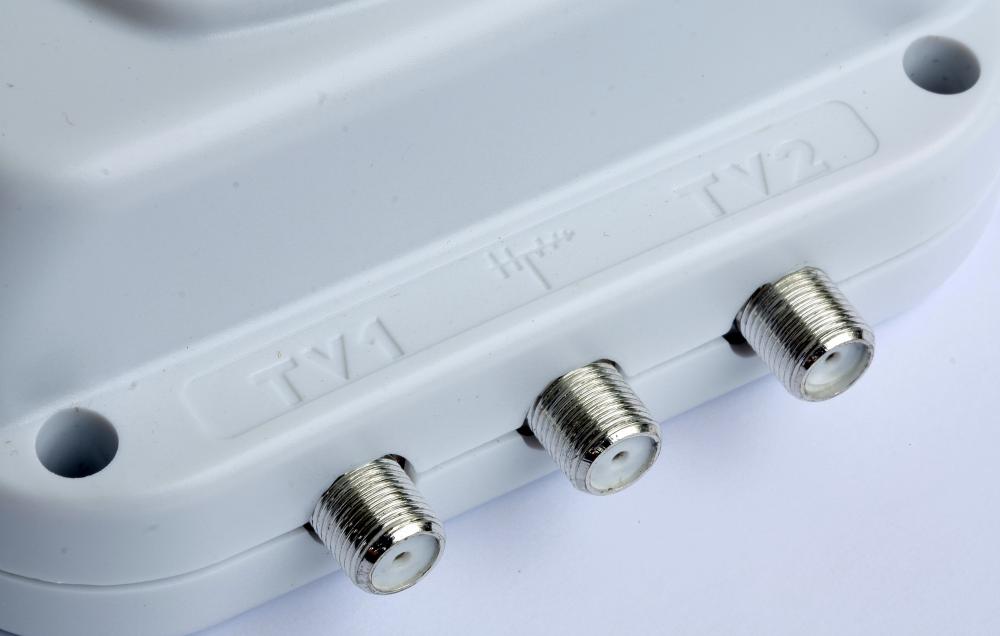At WiseGEEK, we're committed to delivering accurate, trustworthy information. Our expert-authored content is rigorously fact-checked and sourced from credible authorities. Discover how we uphold the highest standards in providing you with reliable knowledge.
How do I Choose the Best ATSC TV?
The Advanced Television Systems Committee (ATSC) is responsible for the digital standards that replaced the previous NTSC analog standards in the US, Mexico, Canada and select other countries. Most high-definition televisions (HDTVs) in these countries now come with ATSC tuners. Choosing the best ATSC TV will depend upon many factors.
The first consideration is resolution. To understand this choice better, let’s first consider the two types of HD broadcasts: 720p and 1080i.

A 720p broadcast includes 720 vertical lines and 1280 horizontal lines for a total resolution of 720x1280. The “p” stands for progressive, with the scan lines sent in order, one line after the next. A 720p ATSC TV displays a 720p HD signal natively, meaning there is no conversion necessary. If the TV is a 60Hz set, it refreshes the display 60 times per second, painting each line from top to bottom, in order, progressively. A 120Hz or 240Hz TV will paint the screen 120 or 240 times per second, respectively. This reduces “blur” in fast action scenes like sports, and also reduces “blockiness” in slow pans. Most HD sports are broadcast in 720p.

A 1080i broadcast is a higher resolution, with 1080 vertical lines and 1920 horizontal lines, for a total resolution of 1080x1920. The “i” means the signal is broadcast interlaced, taking two passes to paint the entire screen. The first pass or frame paints the odd lines, the second, the even lines. Since this can cause artifacts in fast action scenes, 1080i is typically reserved for nature documentaries, travel logs, movies and other programs that are scene-oriented. A 1080p ATSC TV integrates the two frames internally to display the picture progressively.

Both HDTVs display broadcasts in their native resolutions. A 720p TV will take a 1080i signal and down-convert it to 720p before displaying it. A 1080p TV will take a 720p signal and up-convert it to 1080p. The quality of the up-converter or down-converter (called scaling) becomes very important when watching programs that are not in the TVs native resolution. For example, a 720p broadcast will look better on a 720p HDTV than on a 1080p set with a poor up-converter. (The sets also up-convert standard definition (SD) and enhanced definition (ED) digital broadcasts.)

If you plan to connect your computer to your HDTV to game or surf the Web, the higher resolution of a 1080p TV is comparable to a computer monitor, whereas a PC display will look fuzzy on a 720p set. The higher resolution is also required to receive the full benefits of Blue-ray® DVD discs, which have a resolution of 1080p.
Brightness and contrast are two important considerations when choosing the best ATSC TV, but these measurements are not standardized, making it unreliable to compare brands or models by specs alone. In general, higher numbers are better, but your eyes are the best judge.
Both plasma and LCD technologies have their pluses and minuses. Plasma TVs have darker, truer blacks and a reputation for overall truer color, while LCDs have made headway in achieving truer blacks and provide beautiful pictures. LED LCD TVs are more expensive but superior to LCD in this regard. Plasma TVs don’t blur action scenes, though LCDs with faster refresh rates are closing this gap as well.
On the downside, plasma TVs have a highly reflective screen lending themselves best to a windowless screening room. An LCD TV can be comfortably viewed opposite windows, open doors or lamps without reflection. An LCD TV also uses less electricity than its plasma equivalent.
Choosing the optimum size depends on how far you will be seated from the ATSC TV. There are several charts online one can use to determine the best screen size. The further back one sits, the less the eye can detect the difference between the tighter packed pixels of the 1080p, and the lower resolution of the 720p. If you plan to sit fairly close to a larger screen, however, you can benefit by choosing a 1080p ATSC TV.
Once you find the best ATSC TV for your needs, check to see that it has the number and type of ports you require. Also, look for a manufacturer’s warranty of at least one year, parts and labor. You might check with your credit card company, as some issuers will extend the manufacturer’s warranty by one year for simply using your card to purchase the TV. If buying the ATSC TV online, read the vendor’s return policy carefully first, as some vendors do not provide the normal 30-satisfaction guaranteed policy on HDTVs.
AS FEATURED ON:
AS FEATURED ON:














Discussion Comments
I absolutely hate it when someone asks a tech question and gets an answer that has little to do with the question. LG is the best. Why?
They bought out Zenith, which developed much of the technology for US digital OTA. Their tuners are great.
You can manually input stations, rather than having to scan in every direction, thus losing stations from a previous scan.
Post your comments